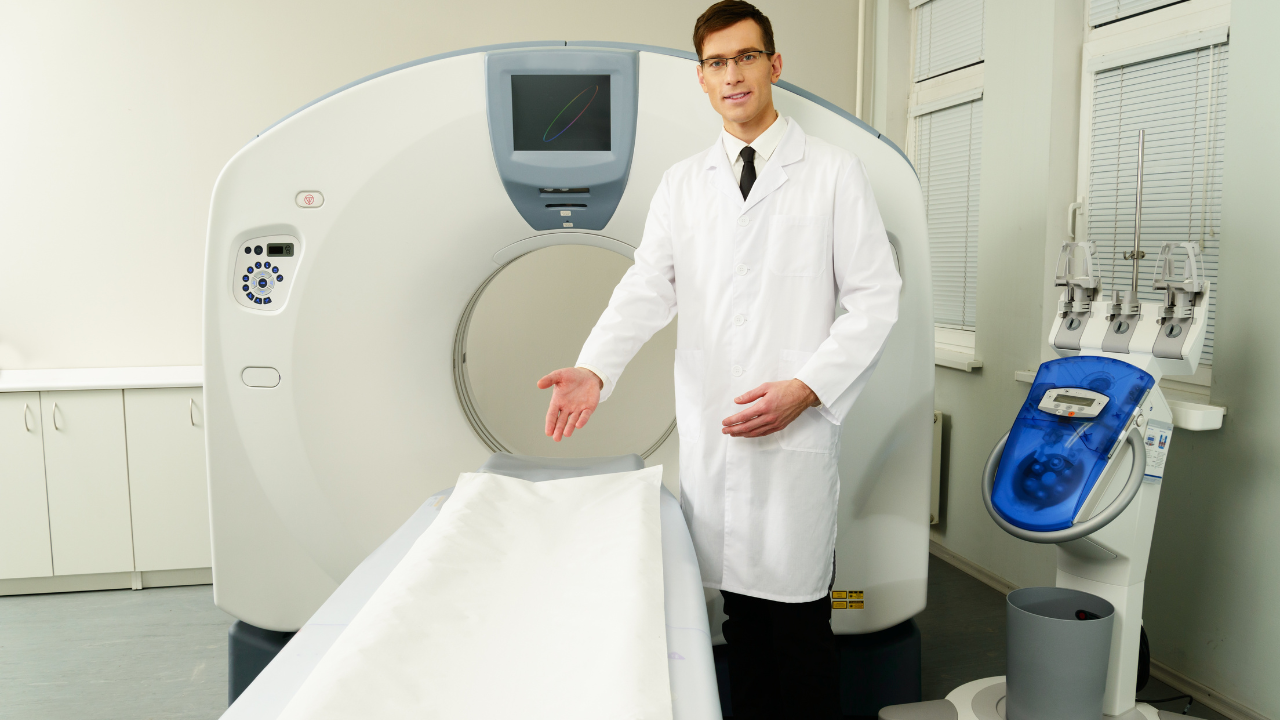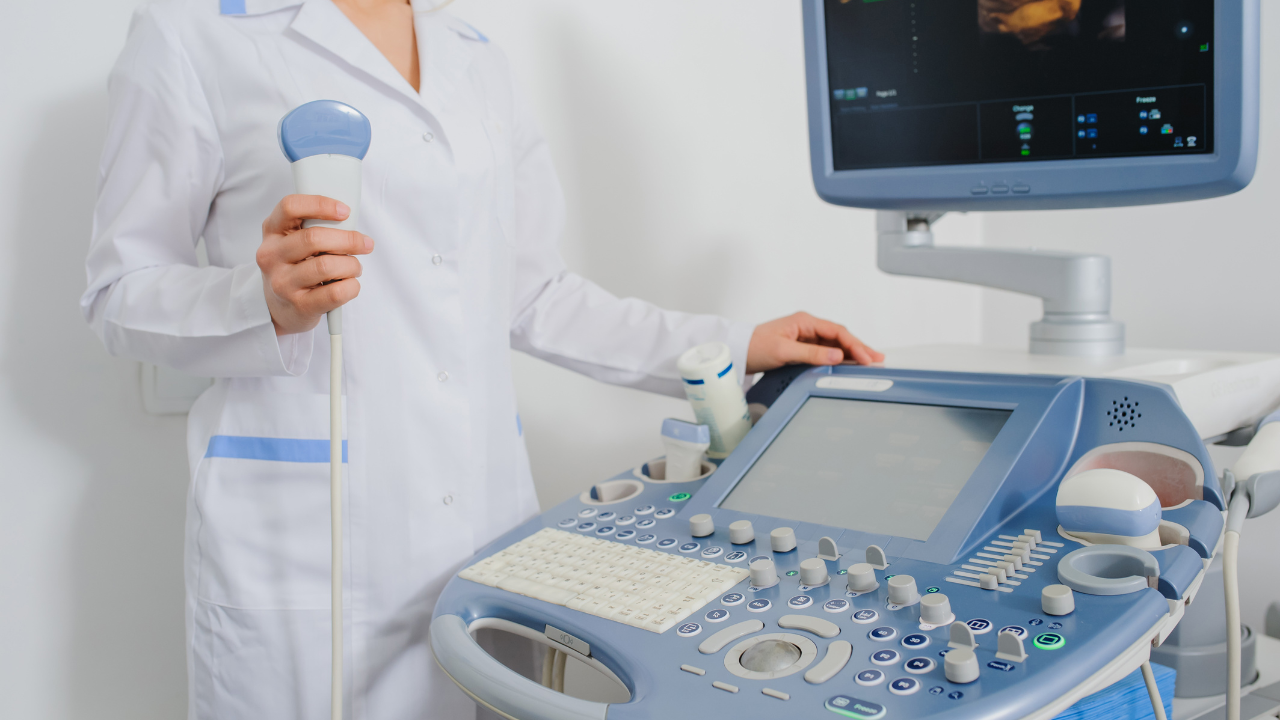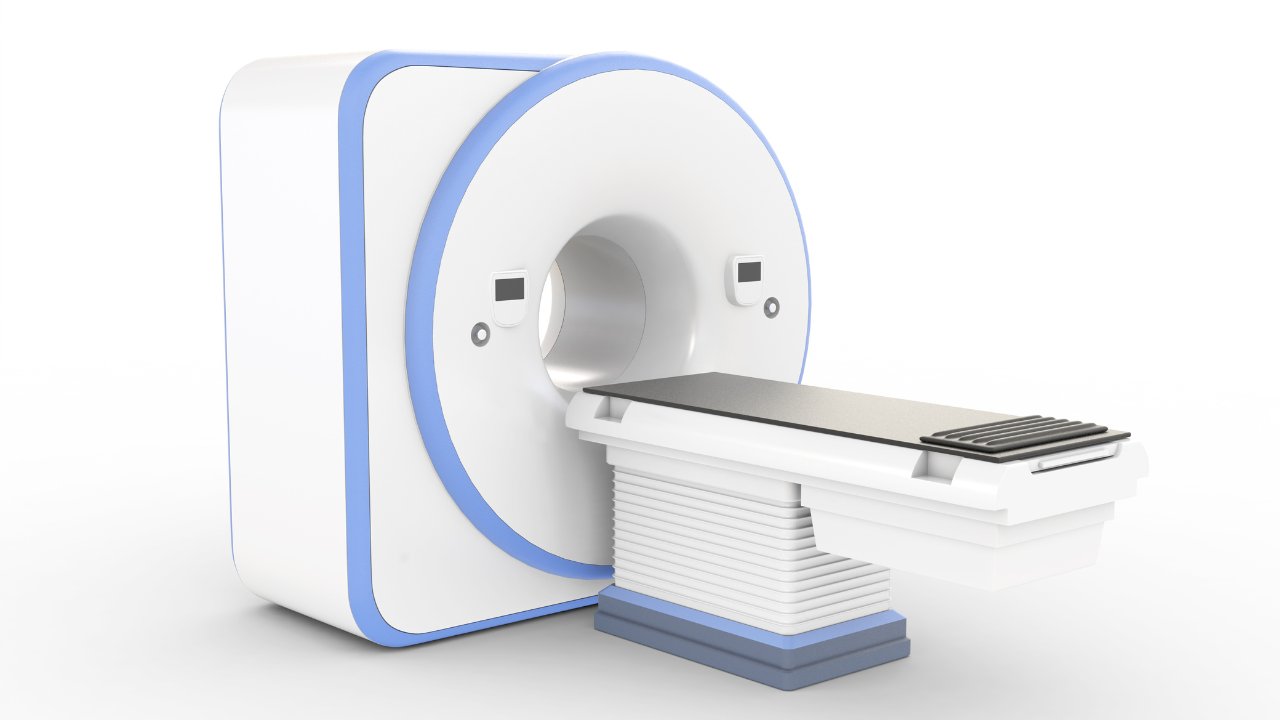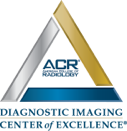Blog and News

Your choice of contrast agent significantly impacts the clarity of your CT scan results. Iodine-based agents, taken orally, intravenously, or rectally, are radiopaque and efficiently absorb X-rays, illuminating blood vessels and tissues. They're tailored for varying needs like solubility and viscosity, which can enhance image quality based on concentration and administration rate. Conversely, barium-sulfate compounds, ideal for gastrointestinal imaging, also block X-rays to provide detailed visuals. Balancing the type and dosage relative to your specific diagnostic requirements, allergy risks, and health conditions is crucial for optimal imaging results. Exploring these differences further might uncover essential nuances for better diagnostic outcomes.
Key Takeaways
- The iodine concentration in contrast agents enhances X-ray absorption, improving tissue visualization.
- Barium sulfate's high radiodensity offers clear imaging of gastrointestinal structures.
- Water-soluble iodine-based agents reduce complications, ensuring clearer and safer scans.
- The viscosity of the contrast agent affects its distribution and image quality.
- Timing and dosage of administration are crucial for achieving peak contrast during CT scans.
Types of Contrast Agents
Contrast agents, typically iodine-based or barium-sulfate compounds, enhance the visibility of tissues in CT scans by selectively absorbing X-rays. As you delve deeper into understanding these agents, it's crucial to comprehend their specific types and the roles they play in diagnostic imaging. Each type of contrast agent is suited for different imaging needs based on their chemical properties and the way they interact with the body.
Iodine-based agents are primarily used because they effectively block X-rays, thereby illuminating blood vessels, organs, and other structures. These agents are versatile and can be administered orally, intravenously, or rectally, depending on the area of the body being examined. On the other hand, barium-sulfate compounds are generally used for visualizing the gastrointestinal tract. Due to its high atomic number, barium is efficient at absorbing X-rays, which makes it ideal for detailed studies of the stomach, intestines, and esophagus.
Your role in administering these agents is pivotal. You must consider the specific diagnostic needs, potential allergies, and the overall health profile of the patient. By choosing the appropriate contrast agent, you enhance the diagnostic accuracy, thereby directly impacting patient care and treatment outcomes.
Iodine-Based Contrast Mechanics
To understand how iodine-based contrast agents enhance CT imaging, it's essential to explore their absorption mechanics and interaction with body tissues. These agents are intrinsically radiopaque, meaning they absorb X-rays more efficiently than surrounding tissues. When you administer an iodine-based contrast, it circulates through the bloodstream and selectively accumulates in specific tissues, enhancing the contrast between different structures on the CT images.
The effectiveness of these agents hinges on their molecular structure, which contains high atomic number iodine atoms. These atoms possess a greater ability to attenuate X-rays, making them visible on CT scans. It's crucial to consider the concentration and the rate at which the agent is administered, as these factors directly influence the degree of enhancement and the clarity of the resulting images.
Furthermore, different iodine-based contrasts are tailored for various diagnostic needs. For instance, some are more water-soluble, making them safer for renal function and suitable for patients with compromised kidney health. Others might've a higher viscosity, which can be advantageous for slower infusion rates and prolonged imaging sessions, ensuring thorough saturation and detailed tissue differentiation.
Barium Sulfate Applications
As you explore barium sulfate's role in CT scans, it's crucial to understand its preparation steps. You must adhere strictly to safety protocols to mitigate potential risks associated with its use.
Analyzing its imaging enhancement capabilities reveals how barium sulfate significantly improves the clarity and diagnostic accuracy of CT images.
Barium Sulfate Preparation Steps
Before using barium sulfate as a contrast agent in CT scans, it's essential to follow specific preparation steps to ensure optimal imaging results. You'll start by verifying the correct concentration of barium sulfate needed for the specific type of scan.
It's crucial to mix the barium powder with water in precisely measured proportions. This mixture must achieve a homogeneous suspension, ensuring that the particles are uniformly dispersed to avoid clumping, which can compromise scan quality.
Next, the pH of the solution is adjusted to match the body's natural levels, minimizing patient discomfort and enhancing mucosal adherence. This step is critical for the contrast to coat thoroughly and evenly, highlighting abnormalities effectively during the scan. Each step must be executed with precision to serve patients effectively.
Safety Protocols in Use
After ensuring the precise preparation of barium sulfate, it's imperative to adhere to strict safety protocols during its application to mitigate risks and protect patient health. You must confirm the patient's history for hypersensitivity to barium or any additives. It's crucial to monitor for any adverse reactions during and post-administration, such as difficulty breathing or severe skin rashes, which require immediate medical intervention.
Furthermore, environmental safety measures are paramount; dispose of barium sulfate in compliance with health regulations to prevent contamination. You'll also wear protective gear to avoid accidental ingestion or inhalation of barium powder. Maintaining detailed records of batch numbers and expiration dates ensures traceability and accountability, enhancing safety standards in your healthcare practice.
Imaging Enhancement Capabilities
Barium sulfate's role in enhancing the clarity of CT scans allows radiologists to obtain more detailed and accurate imaging results. When you administer barium sulfate, its high atomic number effectively blocks X-rays, creating stark contrasts within the images. This contrast delineates the contours and boundaries of organs, tissues, and potential abnormalities with precision.
Particularly in gastrointestinal studies, you'll find barium sulfate invaluable for highlighting mucosal patterns and identifying lesions or tumors that might otherwise remain obscured. Its ability to coat and adhere to the GI tract enhances visibility significantly, enabling you to provide critical diagnostic insights. Your adept use of this contrast agent can facilitate early detection of conditions, ultimately contributing to more effective patient care and positive outcomes.
Oral Contrast Explained
As you explore the realm of CT scans, understanding the types of oral contrast is crucial. These agents significantly enhance the differentiation between various gastrointestinal structures, thus boosting the overall image quality.
Types of Oral Contrast
To enhance the visibility of gastrointestinal structures in CT scans, several types of oral contrast agents are utilized, each with specific characteristics and applications.
Barium sulfate suspensions are commonly chosen for their high atomic number, which provides excellent radiodensity. You'll find them in various viscosities and flavors to improve patient compliance and adapt to different diagnostic needs.
Water-soluble iodine-based solutions, another category, offer a lower risk of complications in cases where perforation is a concern. They're particularly useful in delineating the gastrointestinal tract in patients at risk of leakage.
Each agent's selection hinges on optimizing the balance between diagnostic efficacy and patient safety, tailoring the choice to individual clinical scenarios and specific gastrointestinal regions under examination.
Impact on Image Quality
Enhancing gastrointestinal structures, oral contrast agents significantly improve the quality and clarity of CT images by increasing the contrast between the targeted organs and surrounding tissues. When you administer these agents, they delineate the stomach, intestines, and other components within the abdominal cavity.
This differentiation is crucial for accurately diagnosing conditions like inflammatory bowel disease, blockages, or tumors. The agents work by coating the mucosal lining and being radio-opaque, which effectively highlights abnormalities against the more transparent non-contrasted tissues.
Therefore, your choice of oral contrast agent can dramatically affect diagnostic accuracy. Opt for barium sulfate or iodine-based solutions, depending on patient tolerance and the specific diagnostic requirements. This careful selection ensures optimal image quality and supports better outcomes for patients relying on your expertise.
Intravenous Injection Techniques
Proper intravenous injection techniques are crucial for optimizing the distribution and effectiveness of contrast agents in CT scans. When you're administering these agents, it's essential to select the appropriate needle gauge and catheter size based on the viscosity of the contrast medium and the patient's vein anatomy. You'll want to ensure the venous access is secure and the catheter is placed correctly to avoid extravasation, which can compromise scan quality and harm the patient.
Before injection, you must verify the patency of the vein through a saline flush. This step confirms that the contrast will disperse properly without leakage into surrounding tissues. Additionally, the injection rate and the total volume of contrast administered should be meticulously calculated based on the specific diagnostic requirements and the patient's body weight. Automated injection systems can help you maintain a consistent flow rate, which is vital for achieving uniform contrast enhancement across the scanned area.
Enhancing Image Clarity
You can significantly improve image clarity in CT scans by optimizing the timing and dosage of contrast agents. It's crucial to tailor these factors based on the specific diagnostic needs and the patient's medical history. When you adjust the timing of contrast administration, it ensures the agent is at its peak concentration during the scan, enhancing the differentiation of tissues in the resultant images.
The dosage of the contrast agent plays a pivotal role as well. Too little may not provide sufficient contrast, whereas too much can lead to unnecessarily high patient exposure to chemicals and potential image artefacts. Calculating the optimal dosage involves considering the patient's body weight, kidney function, and the type of CT procedure. It's a delicate balance that demands precision.
Furthermore, the choice of the contrast agent itself affects image clarity. Different agents have varying viscosities and iodine concentrations, which influence how they distribute in the body. High-iodine agents, for instance, are preferable for vascular studies as they provide sharper images of blood vessels.
Managing Allergic Reactions
While contrast agents are essential for improving CT scan clarity, it's crucial to manage potential allergic reactions they may induce. You need to be aware of the strategies and protocols in place to mitigate these risks effectively. Understanding and implementing these measures can significantly enhance patient safety and comfort during imaging procedures.
When preparing for a CT scan involving contrast agents, consider the following key management strategies:
- Pre-screening for Allergies: Always conduct a thorough medical history review to identify any prior allergic reactions to contrast agents or related substances. This step is fundamental in avoiding severe complications.
- Utilization of Premedication Protocols: For patients identified as at-risk, premedication with steroids and antihistamines may be recommended. This protocol aims to reduce or prevent allergic response severity.
- Choosing the Right Contrast Agent: Opt for agents with lower osmolality and non-ionic structures when possible, as they're generally associated with fewer allergic reactions.
- Emergency Preparedness: Ensure that emergency equipment and medications for managing acute allergic reactions, such as epinephrine, are readily available. Staff should also be well-trained in recognizing and responding swiftly to symptoms of a reaction.
Contrast Agent Side Effects
Contrast agents, despite their diagnostic benefits, often induce side effects ranging from mild discomfort to severe physiological reactions. You might experience nausea, vomiting, or a mild rash, which are common but generally not life-threatening. However, it's crucial to monitor for more serious effects such as anaphylactic shock, particularly if you have a history of allergies.
The renal system can also be affected. Kidney function might temporarily deteriorate after the administration of certain contrast agents, a condition known as Contrast-Induced Nephropathy (CIN). This is particularly relevant if you have pre-existing kidney issues or diabetes. The risk is compounded by factors such as dehydration and concurrent use of nephrotoxic medications.
To mitigate these risks, adequate hydration before and after the procedure is recommended. Furthermore, the choice of contrast agent can be tailored based on your health profile. Non-ionic, low-osmolarity agents typically have a lower incidence of adverse reactions compared to their high-osmolarity counterparts.
Understanding these potential side effects empowers you to discuss preventative strategies with your healthcare provider. This proactive approach ensures that the benefits of enhanced diagnostic accuracy aren't overshadowed by avoidable risks, thus optimizing patient care and outcome.
Frequently Asked Questions
Can Children Safely Receive CT Contrast Agents?
Yes, children can safely receive CT contrast agents when properly administered. You'll ensure minimal risk by considering the child's health, allergy history, and using the lowest effective dose under close medical supervision.
Are There Alternative Imaging Methods Without Contrast Agents?
Yes, MRI scans are a viable alternative without contrast agents, offering detailed images through magnetic fields and radio waves, avoiding potential risks associated with iodinated contrast materials used in CT scans.
How Does Pregnancy Affect CT Scan Contrast Use?
During pregnancy, you'll find that doctors carefully consider the use of CT scan contrast agents due to potential risks to the fetus. They'll evaluate necessity and possibly opt for alternative, safer imaging methods.
What Is the Cost Difference Between Contrast Agents?
The cost difference between contrast agents can vary significantly; some premium options are up to 50% more expensive. You'll need to analyze cost-effectiveness based on their performance in specific diagnostic contexts to make informed choices.
Can Contrast Agents Affect Kidney Function?
Yes, contrast agents can affect kidney function, especially in people with pre-existing conditions. You'll want to choose agents carefully to minimize risk and ensure safety for those you're dedicated to helping.
Services
Contact Details
Address: 1971 Gowdey Road,
Naperville, IL 60563
Phone: 630-416-1300
Fax:
630-416-1511
Email: info@foxvalleyimaging.com
© Copyright 2023 Fox Valley Imaging, Inc..






